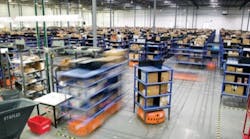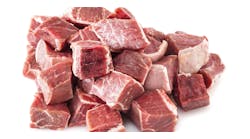What Steps Are You Taking To Automate Your Warehouse?
Amazon.com's recent $775 million acquisition of Kiva Systems, a leading robotic warehouse system provider, bodes well for demanding consumers and virtually guarantees that the journey from online order to warehouse to your mailbox is accurate and fast.
Industry leaders such as Amazon.com are literally re-shaping the way ecommerce businesses process and fill customer orders. Wal-Mart, too, is jumping into the ecommerce business to drive more customers to order online -- and take some lost business back from Amazon.com.
As warehouses continue to grow across the industry to over one million square feet, however, increasing shipments is growing increasingly difficult. With these great distances, warehouse pickers need all the help they can get navigating road aisles, finding the goods and getting back to work.
To help make this work, warehouse managers are investing in technology tools and resources that make life easier for pickers and speed delivery to anxiously awaiting customers thousands of miles away.
WAREHOUSE AUTOMATION TECHNOLOGIES
An overview of technologies revolutionizing the warehouse, logistical, material handling and distribution channel world include:
Nine-inch tall retro reflective barcode labels posted on shelves and aisles enable pickers to scan these images for product information 20 feet away. Warehouse automation efficiency is also increased with a logical alphabetical organizing system.
- Automated guided vehicles (AGVs) are driverless vehicles that move goods from one place to another, mostly equipped with load-handling devices to fulfill specific handling tasks.
- Retro reflective barcode labels posted on shelves and aisles enable pickers to scan these images for product information 20 feet away. When scanned with a barcode reader, they can also be used as a checklist so a picker has an order loaded into their computer. Then as they pick and scan each item, that item will be checked off the list and inventory will be adjusted in the system accordingly.
- Robot delivery systems are used for material storage, retrieval and transporting and assembly work. These robots move backward and forward on embedded tracks while carrying various fulfillment orders simultaneously.
- Rugged computers -- handheld or mounted on forklifts -- withstand all types of industrial environments. Many companies use wireless handheld units which scan barcodes for receiving items, fulfilling pick-and-load orders, and for verifying the items in a shipment. The barcodes for locations can also be scanned to assign an item to a location.
- Voice technology, which had beginnings in the grocery industry, is used for order picking, goods receiving, pallet put-away and let-down, stock checking, inventory tracking and cycle counting.
PG DISTRIBUTION
Warehouse automation is working in Laredo, Texas, where PG Distribution handles northbound and southbound transport of hot sauce and cold beer.
With three warehouses in Laredo totaling approximately 200,000 square feet, one of PGs biggest challenges has been keeping up with the competition in an area whose population has doubled population since 1990. They knew they needed better software for accounting and inventory tracking so they switched vendors.
The old system was not detailed enough. Now everyone can search the whole database and give a quick response to customer questions, said Operations Manager Andres Chapa who uses Magaya software.
THE DOWNSIDE
Is there a downside to automation? What about lost jobs?
As the new generation of smart robots, armed with greater intelligence and flexibility, make their way to the market, it is estimated each robot replaces four jobs in the economy, said Jeremy Rifkin.
According to Nick Banich, consultant at Miebach Consulting, easing costs may make these replacements more commonplace in the next few years.
While full automation can sometimes come with a steep price, the falling price of technology is making semi-automated solutions more attractive than ever. Pick-to-voice, layer-pickers on powered industrial trucks, and pick tunnels are often ways to take advantage of technology at an affordable price, he said.
Clearly, warehouse communications and traffic flow are at the hub of this evolution in the manufacturing industry. While it seems obvious to say that the world just keeps getting smaller and faster, the benefit is that manufacturers who choose to automate or semi-automate are able to deliver a higher-quality service to a global customer base.
About the Authors:




